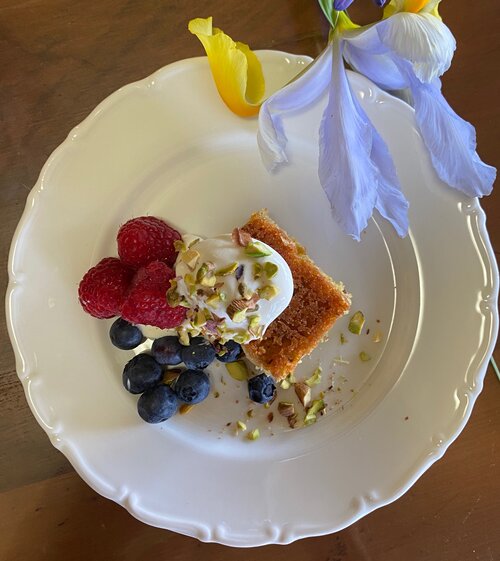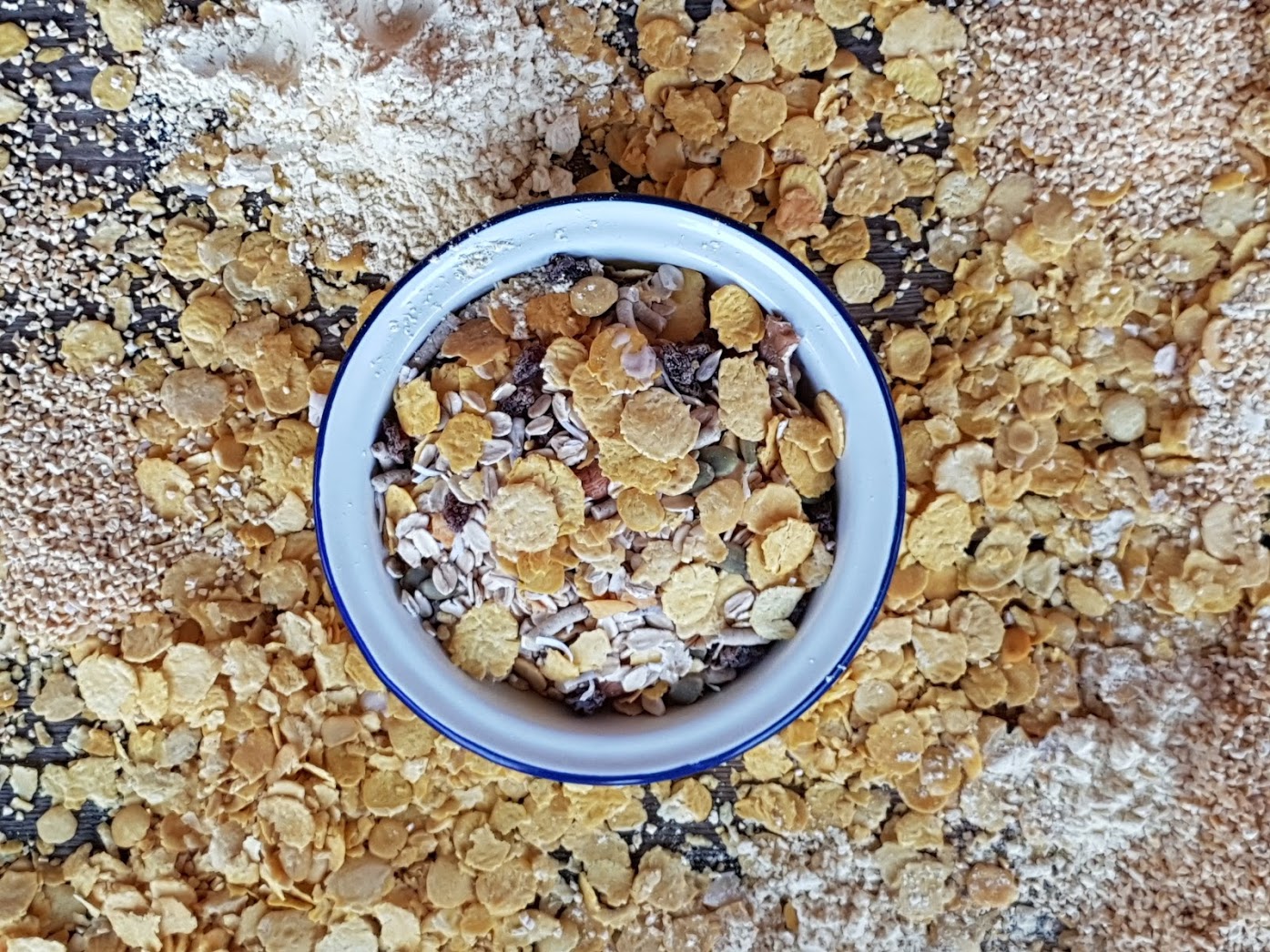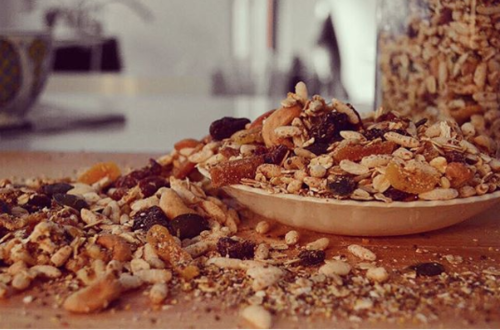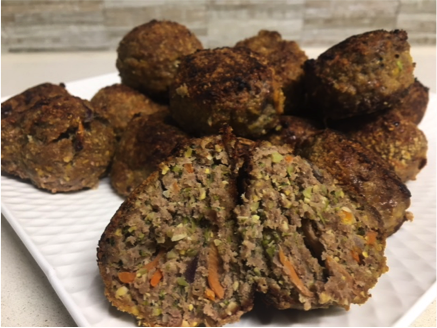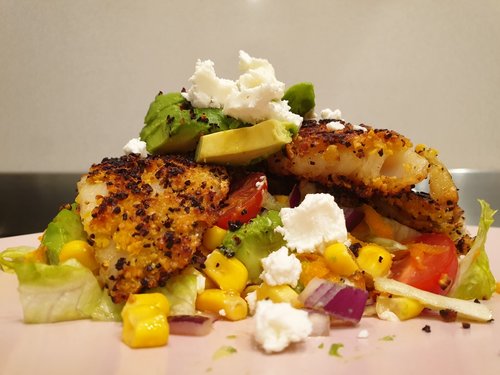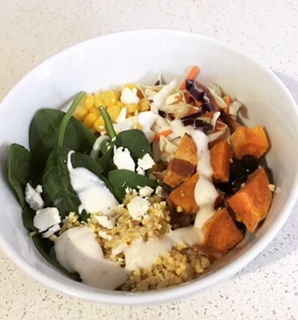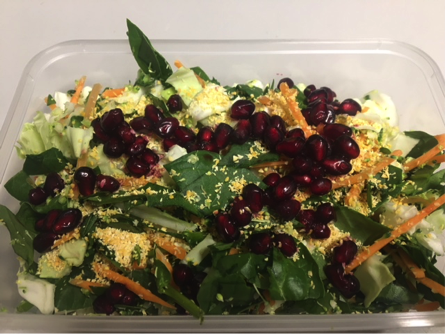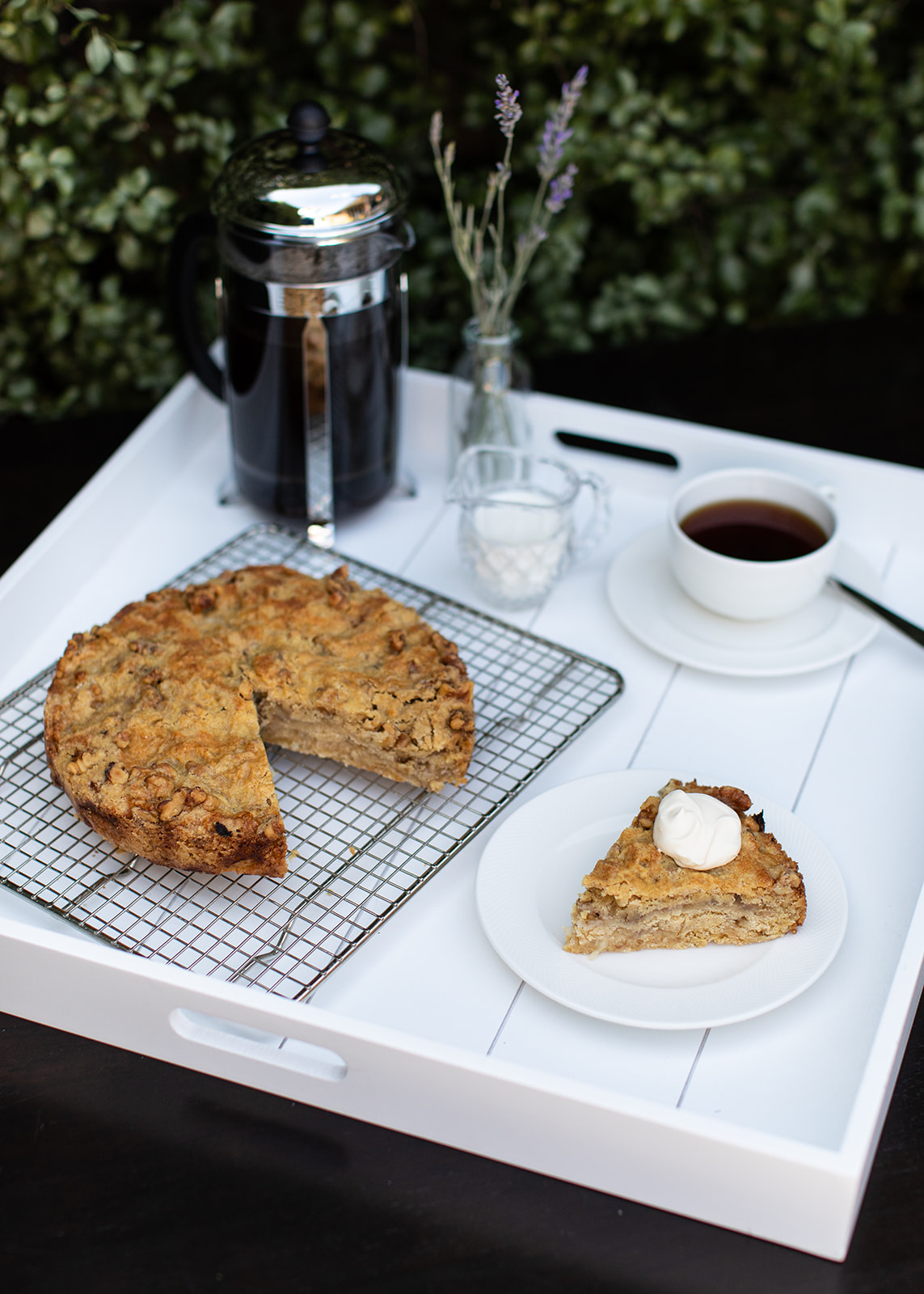
Adapted from Alice Zaslavsky’s recipe.
1 cup (180g) Lupin Semolina
1 cup (230g) caster sugar
1 cup (150g) GF self-raising flour
1 tsp cinnamon
1/2 tsp salt
3-4 large granny smith apples, peeled and grated
1 tsp vanilla bean paste
Juice of 1 lemon
125g stick of salted butter, frozen (plus extra for greasing)
1 cup (100g) shelled walnuts, roughly crushed between your palms
Cream, custard or yoghurt to serve

METHOD
Preheat oven to 180°C.
Combine semolina, sugar, flour, cinnamon and salt in a bowl. Toss about to evenly distribute or use a wooden spoon if you must.
Peel, quarter, core and coarsely grate apples into a separate bowl, stirring through vanilla bean paste/extract and lemon juice to keep the apple from browning and adding to the juiciness.
Line the base of a 20/22cm springform cake tin and grease the sides (I like to use olive oil cooking spray, but you can use some extra butter for greasing). If you don’t have a springform cake tin, you could also use a pie dish and scoop this out as more of a crumble.
Take the butter out of the freezer and coarsely grate a third of it across the base of the cake pan. Gently encourage the grated butter into spots that don’t look as well covered.
Scoop out a cup of dry ingredients and sprinkle it across the bottom of the pan (yes, it will very likely look like the weirdest thing you’ve ever put in your cake tin). I like to twist the cake tin about in my hands to help distribute the dry ingredients evenly.
Then spread half the apple mixture on top of the dry ingredients layer.
Scoop another cup’s worth of dry ingredients and sprinkle over the top of the apple.
Grate another third of the butter on top (if it feels like it’s starting to melt, consider using some baking paper as a handle, or popping the butter back into the freezer for 15 minutes or so). If all this ‘layering’ talk has you confused, the order into the tin is: butter, dry, apples, dry, butter, apples, walnuts, dry, butter.
Spread the other half of the apple mixture on top of this. Arrange the crushed walnuts across this layer.
Sprinkle the rest of the dry ingredients on top. Finish with the last of the butter.
Pop onto a baking tray and bake for 30-35 minutes, until the top is slightly browned, just before the nuts begin to burn. For an oven that presents any trouble with uneven heat (like mine!), consider turning the cake tin 180 degrees and leaving it in the oven once it’s off for an extra 5 minutes to help even out the browning on top with residual heat.
Allow the cake to cool in the tin, then spring open and serve with cream or yoghurt. Prepare for it to be crumbly yet light, and for your guests to be amazed.

